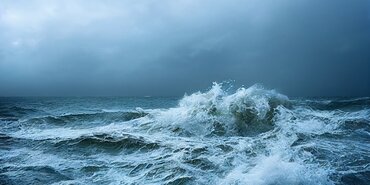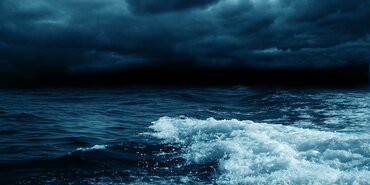May, 2023 - London Arbitration 2/23: pilot’s one-off mistake did not render the port unsafe

In London Arbitration 2/23, the arbitration tribunal rejected the owner’s claim for damages for breach of the Charterers’ unsafe port warranty, following the ship’s grounding, on the basis that a one-off mistake in the pilot’s navigation of the ship was not a defect in the set-up of the port that would render the port unsafe. In addition, the tribunal found that the lack of proper charts on board the ship rendered the ship unseaworthy although this was not causative to the ship’s grounding.
Facts
Pursuant to a charterparty on amended NYPE 1981 form, the owner agreed to charter the ship to the charterer for “one time charter trip of one laden leg, via Indonesia to China trading always via safe port(s), safe berth(s), safe anchorage(s), always afloat, always within IWL, with harmless coal bulk…”. The ship was ordered to load at Muara Satui and discharge at Chaozhou, China. In order to reach the discharge berth at Chaozhou, ships are required to proceed along a buoyed approach channel and then make a starboard turn into the harbour.
The ship met the SOLAS Chapter V Regulation 19 chart carriage requirements in that it was carrying and using paper charts for navigation. In addition, the ship was fitted with a TRANSAS ECS which was capable of displaying electronic navigational charts. During the time of the grounding, the ship was navigating on Chart UKHO 1972 whilst the electronic navigational chart was displayed on TRANSAS ECS, both of which lacked important details as to the limits and the depths of the channel. The master had not obtained a copy of the paper chart which showed the limits of the channel and positioning of the buoys.
During the inbound passage to the discharge berth while under pilotage, the ship grounded on charted shoal water as a result of the pilot’s failure in manoeuvring the ship within the safe water limits.
It was common ground between the parties that (i) the grounding was caused by the pilot’s error in the navigation of the ship and (ii) the ship’s charts were inadequate given that they lacked important information on the limits and the depths of the channel.
The owner contended that the port was unsafe on the basis that the pilot’s failure to properly manoeuvre the ship demonstrated a disabling lack of skill or knowledge amounting to incompetency as per the competence test set out in The Eurasian Dream [2002] 1 Lloyd’s Rep 719. The owner’s claimed in excess of US$ 1.1million for the cost of repairing the ship as a result of the grounding. On the other hand, the charterer argued that the effective cause of the grounding was the ship’s unseaworthiness in failing to have proper charts on board which would allow the master to prepare a proper berth-to-berth passage plan.
The decision
Turning first to the owners’ unsafe port claim, the tribunal considered that the grounding was a result of the pilot’s negligence in the navigation of the ship: the pilot knew the limits of the deep-water channel but failed to manoeuvre the ship within the safety limits. However, the tribunal did not consider that the pilot was incompetent as this was an experienced pilot who had not been involved in any other incidents and was able to control the ship and the tugs. Rather, the pilot simply failed to exercise the manoeuvre of the ship correctly. Accordingly, the tribunal held that the port was not unsafe but rather this was a one-off mistake of an otherwise competent pilot which did not amount to a defect of the port as per The Evia (No 2) [1982] 1 Lloyd’s Rep 334,338. The grounding was not a result of the ship being exposed to dangers that could not have been avoided by good navigation or seamanship, nor was the ship exposed to an abnormal occurrence.
Turning to the charterer’s allegations of unseaworthiness, the tribunal considered that the ship was, in fact, unseaworthy at the beginning of the voyage due to the lack of appropriate charts on board. This issue of obtaining proper charts could have been rectified, however the master made no effort to obtain appropriate charts and there was no evidence that the owner had exercised due diligence in ensuring that the ship had a compliant passage plan before she proceeded to the discharge port. That said, the tribunal concluded that the unseaworthiness was not causative to the grounding. The tribunal also found that the master was negligent in (i) failing to obtain a copy of the appropriate as he should have been aware that the charts on board the ship were not sufficient and (ii) for failing to monitor the pilot’s handling of the ship.
Comments
The tribunal’s decision provides some useful guidance on unsafe port claims involving pilot error in the navigation of a ship and re-affirms that such claims are very fact sensitive. It appears that the threshold of meeting the competence test is quite high and arbitration tribunals may be reluctant to find that a pilot was incompetent as a result of a single mistake in a task that the pilot performs on a regular basis.
In addition, while the tribunal’s conclusion that the ship was unseaworthy as a result of the lack of proper charts on board is somewhat anticipated (given also the Supreme Court’s decision, in the CMA CGM Libra [2021] UKSC 51, that a defective passage plan may render the ship unseaworthy), it is surprising to note that in this case the tribunal found that the unseaworthiness was not causative to the grounding, not least in circumstances where the tribunal found that the pilot’s error could have been (but was not) detected by the master due to the deficiencies in the ship’s in-port passage plan.
As always, Members are invited to contact their usual Club contact for further advice in relation to the issues discussed above.
- Date
- 18/05/2023




